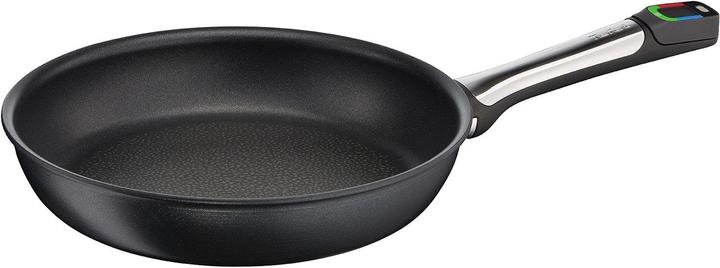

Pangate 2.0 – how are the pans doing after three years?
Three and a half years ago, I was mad about Teflon pans. The non-stick coating didn’t last long. Upset and enraged, I researched pans and coatings before buying better ones. Or aren’t they better? After more than three years, here’s my verdict.
I learned early on that I shouldn’t mess around with metal knives and pan lifters in Teflon pans, and that they don’t belong in the dishwasher either. I follow the rules. But in the past, the coating began to flake off my non-stick pans after merely two years.
It’s annoying, it hurts your wallet, and it sucks, especially for the environment. That’s why I did some research.
In my Pangate article from 9 March 2018, you’ll find a comparison and explanation of materials and coatings. Hopefully, it helps you in making a good decision on what to buy.
At the time, I decided on two new enamelled stainless steel pans. On top of that, I got a Tefal permanent loan from our buyers. I once again let myself be persuaded to try a pan with a non-stick coating. It’s supposed to be «smart»:
Find currently available non-stick Tefal pans here and enamelled pans by Riess here.
Preface: the three years of frying experience
All three pans have been in active use, almost daily, since they were first brought to my kitchen. I’ve probably done the most frying with the large, enamelled stainless steel skillet. It’s better for frying meat than the pan with non-stick coating. Thanks to its mass, it retains heat better. In my opinion, it creates a stronger taste in the meat. But the pan and its mini me are also great for vegetables and other side dishes. So for pretty much everything. Still, I prefer to use the Tefal pan for certain dishes. Why? I can’t really explain it myself.

The non-stick pan is the second most used item in our household of two. It’s lightweight aluminium, which probably subconsciously tempts me to reach for it when a dish needs less heat. On second thought, I prefer it especially when frying potatoes or spaetzle. One more thing about it being «smart»: it beeps when the pan is hot enough for frying. I have tried this several times and was happy with the result. In all honesty, I don’t really care much about having a smart pan.
So in what condition are these pans today? How are the coatings doing?
This is how the enamel and non-stick coating look after more than three years
The two enamel pans don’t look quite as new as they did three years ago. The coating shows discolouration, a light patina has formed. However, the non-stick effect is as good as on the first day.


I’m very satisfied, the two pans will probably do their job for a long time. Only the wood on the handle has dried out a bit, in the meantime. Despite the fact that I always wash the pans by hand. I could put them in the dishwasher, enamel doesn’t mind. Sporadic rubbing with a wood oil, linseed oil or olive oil would stop the wooden handle from becoming brittle. Let’s see if I can motivate myself to take a little better care of the wood in the future.

The appearance of the Tefal pan, or rather its coating condition, never ceases to amaze me. A miracle: the coating is intact – wow!
This frying pan is the first ever with non-stick coating that has survived longer than two years in our household. Sadly, I’m not sure how much longer it will last. Upon closer inspection, I see the first signs of damage.

The non-stick coating is missing from some parts of the rim of the pan. This probably comes from doing the dishes, or rather from drying upside down. The drying rack next to the sink or improper stacking are likely to blame. Besides the fact that non-stick coatings aren’t particularly tough.
Well, my rage for Teflon-like coatings has calmed over the years. But it’s still present because I’ve had to dispose of pans too many times in the past. However, with this one pan, Tefal has proven to me that it can be done differently. If I need a pan again someday, I’ll buy enamelled products again.
I’ll get back to you in three years again with further updates. Until then, I hope they continue to provide me with pantastic services.
135 people like this article
I find my muse in everything. When I don’t, I draw inspiration from daydreaming. After all, if you dream, you don’t sleep through life.




